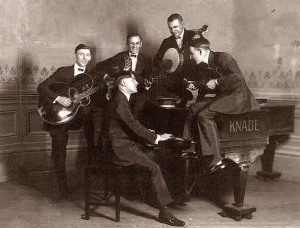The first post in this series discussed what defines a trade secret. The second post considered what reasonable steps must be taken to guard the secrecy of your trade secret.
But what happens if, despite your best efforts, your trade secret is discovered? This post will focus on some specifics you should know if you are thinking of taking action against the “bad guys.”
What is misappropriation of a trade secret?
If someone learns, uses or discloses your trade secret as a result of improper means, that generally constitutes an unlawful taking or “misappropriation” of that trade secret. So if you want to take action for misappropriation of a trade secret, you must show that it leaked out as a result of “improper means.” That in turn raises the question of what constitutes “improper means,” in this context.
In the last post in this series which covered maintaining the confidentiality of your trade secret, we learned that if someone learns a trade secret through theft or “spying,” that can be improper means. Generally, obtaining a trade secret through bribery or misrepresentation will be considered improper means. The same can be true (though not always) if the secret leaks out the result of a breach of someone’s duty to maintain secrecy.
One common scenario for claims of trade secret misappropriation is when an employee with access to confidential trade secrets leaves to work for a competitor. Consider, for instance, a salesman with access to a confidential customer list; a marketing person with knowledge about upcoming advertising and marketing plans; a tech employee with extensive knowledge about upstream research and development activities. When these kinds of employees are hired away by a competitor, it’s only natural to assume that they will use and/or disclose the trade secret in the course of their new employment.
What is not misappropriation?
You should bear in mind, though, that there are ways a competitor can learn your trade secret that are not regarded as misappropriation. If someone learns your trade secret as a result of your failure to take reasonable precautions to protect its secrecy, that is not improper means and thus not misappropriation. Similarly, if someone learns your trade secret by purchasing your product and taking it apart to learn how it works (called “reverse engineering”), that is not improper means either, and thus not misappropriation.
Even if your trade secret has been misappropriated by one party, in some cases others who learn the secret from the original “thief” may not have any liability. This is particularly true of the second parties engaged in no misconduct in learning the secret.
The problem of Internet posting
This issue of the “innocent” second party is a real problem if, for example, the thief posts your trade secret on the Internet. There are interesting cases on this subject from California, Virginia and Colorado courts, involving the Internet posting of alleged trade secret materials of the Church of Scientology.
In the Church of Scientology cases, the courts found that the original posters may have liability, but those who merely downloaded the posted information committed no misconduct. The courts went on to find that trade secret protection had been lost through the posting, because the information had become “generally known” and thus no longer secret.
What remedies can I get through a misappropriation lawsuit?
If you are successful in your trade secret misappropriation lawsuit, you can get a permanent injunction that bars the misappropriating party from use or further disclosure of the trade secret. You may also be able to obtain a temporary restraining order and preliminary injunction while the lawsuit is pending, to prevent a threatened misappropriation or to prevent use of the trade secret until a judgment is rendered.
You also can seek money damages for your actual injury and/or the defendant’s profits from the use of the trade secret. In the case of willful misappropriation the court may even double the award and/or award you attorneys’ fees.
Get Legal Advice
My comments here are general in nature, of course. As I noted earlier in this series, there is no preemptive federal statute on the subject and thus trade secret laws vary from state to state.
If you suspect misappropriation has occurred, you should work with an attorney with experience in the field of trade secrets. He or she can look closely at the circumstances with reference to your state’s trade secret statute, to determine whether you may have an action for misappropriation.






